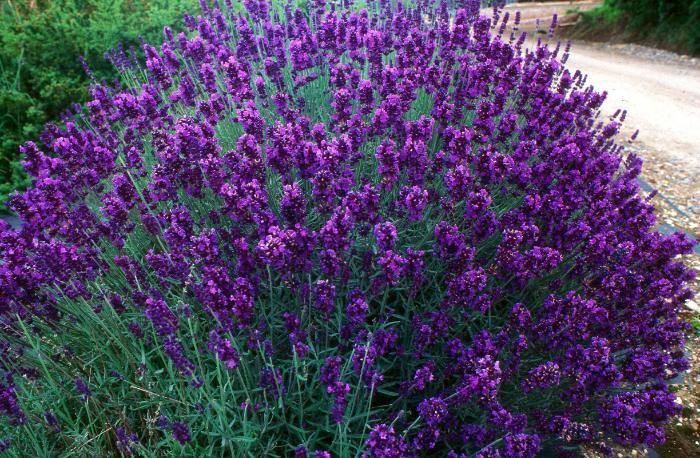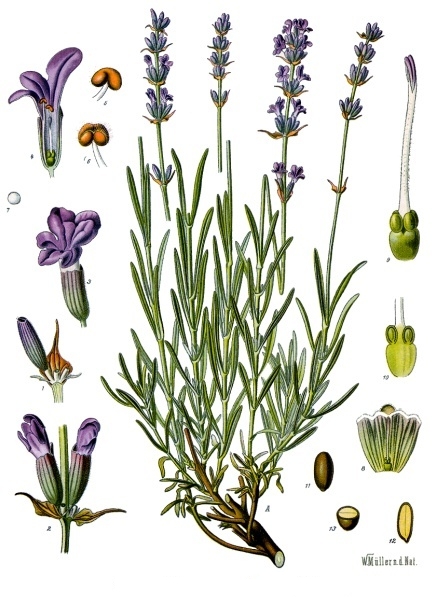Lavendula angustifolia
Lamiaceae
Common name: English lavender
Leaf: evergreen in warm winter climates, aromatic, small, narrowly lanceolate, grey-green, on square stems, up to 2.5" long
Flowers: purple flowers appear in terminal spikes late spring- early summer
Height: 1-1.5'; Spread: 1-1.5'
Habit: semi-woody subshrub; Form: mounded
Culture: dry to medium, well-drained soil in full sun. Good drainage is very important especially in winter. In poorly drained soils, root rot can easily become a problem. Ideally, a light, sandy soil, with low fertility. Deadhead to promote continual flowering. Best time to prune is in spring, after new leaves have emerged, this is a good time for shaping. Every 3 years, prune back to 8" to promote less leggy, bushier growth. L. Angustifolia does not like high humidity, but rather the dry heat (Mediterranean origin). If you are in an area of high humidity, consider using rocks as a mulch, instead or organic mulch, to create a drier localized environment. May appreciate winter protection and/or a sheltered location, or shielding from the prominent winter wind. USDA zones 5-8. 'Hidcote’ is a denser mounded form typically growing to 20” tall with saturated purple-blue flowers and grey foliage. May be kept dense with regular pruning.
Origin: Mediterranean
Uses: Lavender flowers and gray-green silvery leaves provide mid-summer color and contrast to the perennial border front, rock garden, herb garden or scented garden. Can be particularly very when massed. Also effective as an edger or low hedge in some areas.
 |
| L. angustifolia 'Hidcote' |
 |
| L. angustifolia |
No comments:
Post a Comment